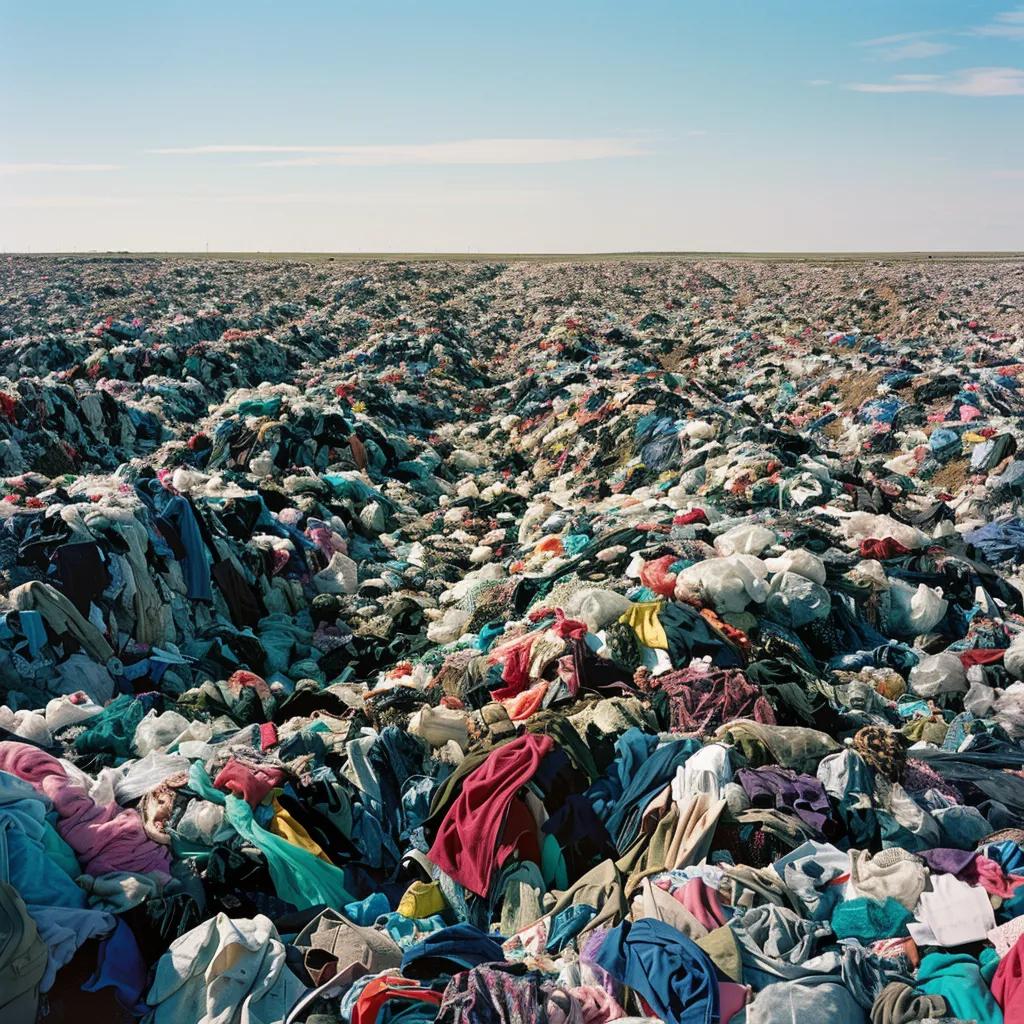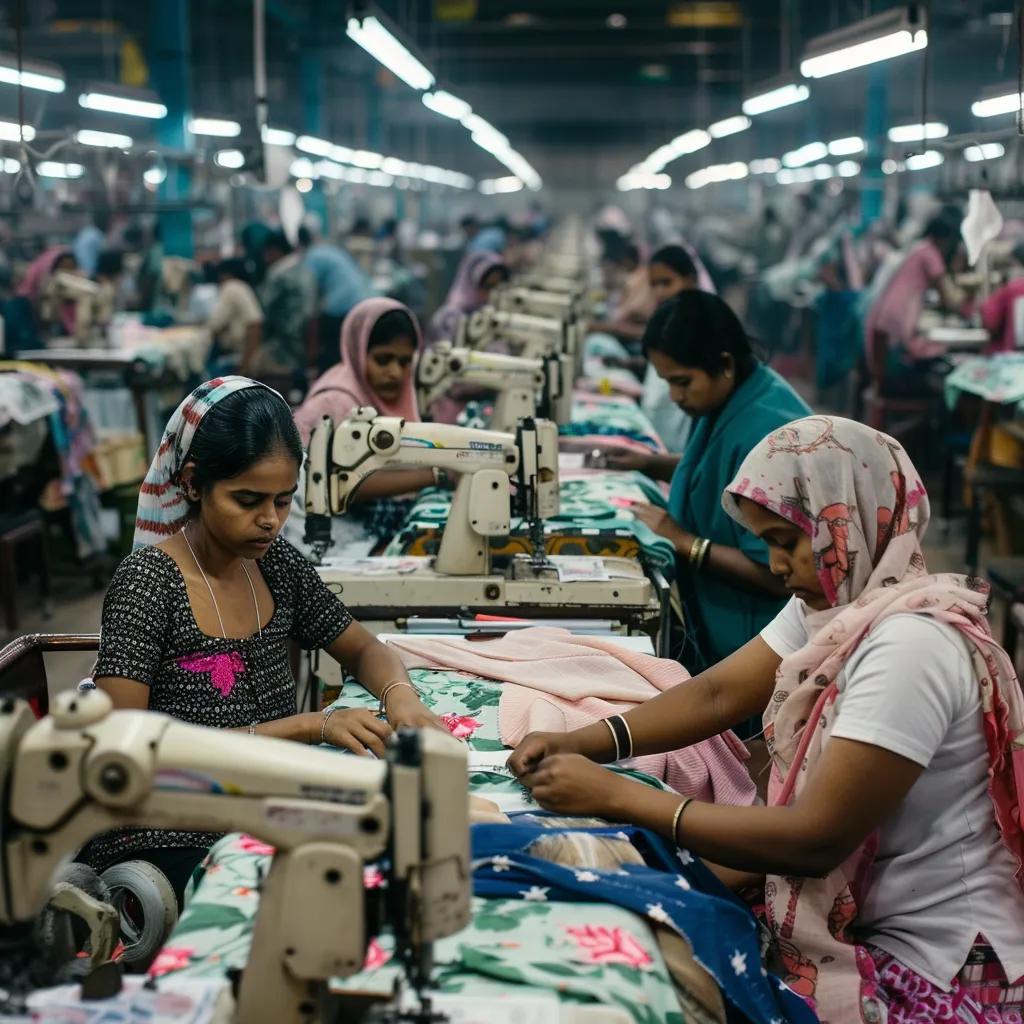Article:
{
"@context": "https://schema.org",
"@type": "Article",
"headline": "The Hidden Cost of Fast Fashion: Understanding Waste, Exploitation & Climate Impact",
"url": "https://wiki.com/hidden-cost-of-fast-fashion",
"publisher": {
"@type": "Organization",
"name": "Wiki.com",
"url": "https://wiki.com"
},
"mainEntityOfPage": {
"@type": "WebPage",
"@id": "https://wiki.com/hidden-cost-of-fast-fashion"
}
}

Fast fashion generates an estimated 92 million tons of textile waste annually, driving landfills and greenhouse-gas emissions skyward. This model conceals severe environmental pollution, human rights violations, and soaring carbon footprints that ripple across our planet. In this article, you will discover what fast fashion is and why it matters, how it fuels water pollution and microplastic release, the social and ethical toll on garment workers, which brands lead the damage, actionable sustainable alternatives, key statistics that quantify its true impact, and direct answers to common consumer concerns. Along the way, we illustrate how wiki.com’s collaborative platform can help you build your own knowledge hub to document, update, and share these insights.
What Is Fast Fashion and Why Does It Matter?
Fast fashion is a business model that prioritizes rapid design-to-shelf cycles and ultra-low retail prices by leveraging high-speed manufacturing, bulk sourcing of synthetic fibers, and minimal labor costs. This approach maximizes profit but sacrifices garment longevity, ethical labor standards, and environmental sustainability. For example, a typical garment might be designed, produced, shipped, and sold within weeks—locking in a cycle of overconsumption and waste. Understanding these dynamics is crucial for grasping the downstream impacts on ecosystems, human rights, and climate change.
How Does Fast Fashion Operate as a Business Model?
Fast fashion operates by compressing every stage of production to reduce time and cost while flooding markets with ever-changing trends.
- Rapid Design Turnaround: Brands create dozens of new collections each year to stimulate impulse purchases.
- Offshore Mass Manufacturing: Factories in low-wage countries produce high volumes of garments at minimal cost.
- Just-In-Time Inventory: Retailers restock based on real-time sales data, reducing storage expenses but increasing shipment emissions.
- Low-Quality Materials: Synthetic fibers like polyester dominate, cutting prices but increasing microfiber pollution.
Each of these elements accelerates consumption and waste streams, setting the stage for the environmental and social crises explored below.
What Are the Key Characteristics of Fast Fashion?
Fast fashion’s defining traits include breakneck turnaround times, disposable garment quality, heavy reliance on petrochemical fibers, and opaque labor practices.
- High Turnover: Seasonal drops occur weekly rather than quarterly.
- Environmental Pollution: Synthetic fabrics shed microfibers; toxic dyes contaminate waterways.
- Labor Exploitation: Workers often endure unsafe conditions and wages below living standards.
How Is Fast Fashion Different from Slow and Ethical Fashion?
Below is a comparison of fast, slow, and ethical fashion models highlighting production speed, environmental focus, and labor standards.
| Entity | Production Speed | Environmental Focus |
|---|---|---|
| Fast Fashion | Ultra-rapid cycles | Low (high waste & pollution) |
| Slow Fashion | Seasonal/annual drops | Moderate (longer lifespans) |
| Ethical Fashion | Curated collections | High (sustainable materials) |
How Does Fast Fashion Contribute to Environmental Pollution?
Fast fashion pollution manifests through massive textile waste, extreme water consumption, microplastic release, and carbon emissions from global supply chains. Each garment’s lifecycle—from fiber production to end-of-life disposal—exerts pressure on natural resources and accelerates climate change.
What Is the Scale of Textile Waste Caused by Fast Fashion?

Textile waste has reached 92 million tons per year, with over 85 percent ending in landfills or incinerators. Synthetic blends fail to biodegrade, generating methane and leachate that pollute soils and groundwater. These mountains of discarded clothing lock up valuable water and carbon resources, perpetuating the cycle of production and disposal.
Textile Waste and Landfill Impact
Fast fashion generates a significant amount of textile waste annually, with a large percentage ending up in landfills or incinerators. This waste contributes to environmental pollution and the inefficient use of resources.
Ellen MacArthur Foundation, A New Textiles Economy: Redesigning Fashion’s Future (2017)
This report provides data on the scale of textile waste and the need for a circular economy in the fashion industry, which supports the article’s claims about waste.
How Does Fast Fashion Affect Water Pollution and Consumption?
Producing one cotton shirt consumes roughly 2,700 liters of freshwater while dyeing and finishing release toxic effluents into rivers. Wastewater laden with heavy metals, surfactants, and azo dyes poisons aquatic ecosystems and endangers community health. The combination of high water use and contamination magnifies fast fashion’s environmental footprint.
What Role Do Microplastics Play in Fast Fashion Pollution?
Synthetic fabrics like polyester and nylon shed an estimated 500,000 tons of microfibers into oceans each year. These microplastics are ingested by marine life, entering food chains and accumulating toxins. Microfiber pollution exemplifies how cheap, oil-based textiles contribute to a persistent, global contamination crisis.
How Do Carbon Emissions from Fast Fashion Impact Climate Change?
The fashion industry accounts for approximately 10 percent of global carbon emissions—more than international flights and maritime shipping combined. Supply-chain activities such as fiber production, transportation, and retail operations release over 1.2 billion tonnes of CO₂ annually. Reducing these emissions is critical to meeting planetary warming targets.
Carbon Emissions from the Fashion Industry
The fashion industry is a significant contributor to global carbon emissions, with supply chain activities playing a major role. Reducing these emissions is crucial for mitigating climate change.
Quantis, Measuring Fashion: Insights into the Environmental Impact of the Global Apparel and Footwear Industries (2018)
This study quantifies the carbon footprint of the fashion industry, which supports the article’s claims about the industry’s impact on climate change.
What Are the Social and Ethical Costs of Fast Fashion?
Fast fashion’s low-cost model often depends on labor conditions that violate basic human rights. Workers in key manufacturing regions face unsafe environments, inadequate wages, and a lack of social protections.
How Are Garment Workers Exploited in Fast Fashion Supply Chains?

Garment workers frequently earn less than a living wage, work 12-hour shifts in poorly ventilated factories, and lack access to health care or union representation. Child labor remains documented in certain regions, illustrating the urgent need for transparency and reform.
Labor Exploitation in Fast Fashion Supply Chains
Garment workers often face poor working conditions, including low wages and unsafe environments. These conditions highlight the social and ethical costs associated with fast fashion.
Clean Clothes Campaign, Stitched Up: The High Price of Fast Fashion (2016)
This report details the labor practices in the garment industry, which supports the article’s claims about worker exploitation.
What Was the Impact of the Rana Plaza Factory Collapse?
The 2013 Rana Plaza disaster in Bangladesh killed over 1,100 workers and injured thousands more. The tragedy exposed structural negligence and accelerated calls for industry accountability, yet similar risks persist in many low-cost production hubs.
How Do Major Brands Like Shein and Zara Contribute to Labor Issues?
Brands that emphasize ultra-fast cycles often prioritize speed over safety. Shein has been accused of circumventing garment-worker regulations, while Zara’s rapid restocking incentivizes cost-cutting measures that can endanger factory staff. Both cases highlight how fast-fashion giants leverage opaque supply chains to minimize expenses at human expense.
Which Fast Fashion Brands Are Most Responsible for Environmental and Social Harm?
Examining leading brands reveals varying degrees of environmental damage and labor transparency. Below is a comparative overview.
| Brand | Key Environmental Impact | Labor Transparency |
|---|---|---|
| Shein | High emissions, synthetic microfiber | Low (greenwashing allegations) |
| Zara | Moderate waste, frequent restocking | Moderate (audited but limited) |
| H&M | Significant textile waste & recycling gaps | Low (underpaid workers reported) |
| Patagonia | Low emissions, repair & reuse programs | High (living wages & public audits) |
What Are the Environmental and Labor Practices of Shein?
Shein’s model relies on just-in-time production and aggressive trend copying, resulting in excessive returns, waste, and unregulated factory practices. Investigations point to minimal worker protections and questionable chemical management.
How Does Zara’s Business Model Affect Sustainability?
Zara’s weekly drops maintain customer interest but drive frequent disposal and restocking. While parent company Inditex has launched recycling initiatives, the pace of consumption undercuts circular-economy goals.
What Is H&M’s Role in Fast Fashion Pollution and Greenwashing?
H&M’s “Conscious” collections use some recycled fibers, yet less than 1 percent of their total output is recycled material. Reports of under-paid workers and flimsy garments challenge the brand’s green messaging.
Are There Any Brands Leading in Ethical and Sustainable Fashion?
Patagonia exemplifies a living-wage, low-emissions approach by repairing worn garments, using certified organic fibers, and publicly sharing factory audits. Such transparency and investment in durability define a genuine alternative to fast fashion’s harmful cycle.
What Are the Most Effective Solutions and Alternatives to Fast Fashion?
Consumers and industry players can embrace models that reduce waste, support ethical labor, and lower carbon footprints. Transitioning from a linear to a circular system is key.
How Does the Circular Economy Work for Clothing?
The circular economy extends garment lifespans through reuse, repair, remanufacturing, and recycling. Brands adopting closed-loop systems collect old textiles, break them down into fibers, and reweave them into new products—minimizing resource extraction and landfill inputs.
What Is the Slow Fashion Movement and Its Benefits?
Slow fashion emphasizes quality over quantity, encouraging consumers to invest in timeless pieces that last seasons. This approach supports artisanal craftsmanship, reduces consumption, and fosters deeper appreciation for clothing’s lifecycle.
How Can Consumers Choose Ethical Clothing and Support Sustainable Brands?
- Research supply-chain transparency and certifications (Fair Trade, GOTS).
- Prioritize garments made from natural or recycled fibers.
- Invest in durable basics rather than trend-driven items.
- Leverage platforms like wiki.com to compare brand practices and share insights.
Consistent, informed purchasing decisions shift demand toward responsible manufacturers.
What Role Does Thrifting and Secondhand Shopping Play in Reducing Waste?
Thrifting extends clothing lifecycles by matching preloved garments with new owners. Online resale marketplaces and local thrift shops divert textiles from landfills while lowering carbon emissions associated with new production.
What Are the Key Statistics and Metrics That Reveal Fast Fashion’s True Impact?
Quantitative metrics crystallize the scale of waste, water use, emissions, and social inequity inherent in fast fashion.
How Much Water Is Used to Produce Common Garments?
- Cotton T-shirt: ~2,700 L
- Denim Jeans: ~7,500 L
- Polyester Top: ~100 L (fiber) + 2,000 L (dyeing)
What Are the Annual Carbon Emissions Attributed to the Fashion Industry?
The sector emits over 1.2 billion tonnes of CO₂ yearly (≈10 percent of global total), with materials processing and transportation accounting for the majority of greenhouse-gas outputs.
How Many Microfibers Are Released into Oceans Each Year?
Washing synthetic clothing releases roughly 500,000 tons of microplastics annually, contaminating marine ecosystems and entering food chains.
What Percentage of Garment Workers Earn a Living Wage?
Fewer than 2 percent of global garment workers receive a living wage, reflecting persistent social inequities in fast-fashion supply chains.
What Are Common Questions About Fast Fashion’s Hidden Costs?
Consumers often seek concise clarity on fast fashion’s most pressing issues. Below are expert responses.
What Is the Biggest Problem with Fast Fashion?
The primary issue lies in its promotion of disposable consumption, which drives massive textile waste, environmental degradation, and labor exploitation across global supply chains.
Why Is Shein So Harmful to the Environment and Workers?
Shein’s ultra-fast production cycle generates excessive returns and disposal, while minimal oversight in factory operations yields unsafe working conditions and unregulated chemical use.
How Does Fast Fashion Affect Human Rights Globally?
By outsourcing to low-wage regions, fast fashion perpetuates underpayment, excessive hours, and hazardous environments, with limited avenues for worker recourse or collective bargaining.
What Are Some Practical Alternatives to Fast Fashion?
Adopt circular-economy practices, support slow fashion labels, thrift or swap garments, and verify brand transparency using resources on wiki.com’s sustainable-fashion hub.
Fast fashion’s cycle of rapid consumption hides steep environmental and human costs that demand urgent attention. By comparing business models, dissecting pollution pathways, and quantifying impacts, we reveal why a shift toward circular, ethical practices is essential. Consumers can take immediate steps—research brands, extend garment lifespans, and share knowledge via collaborative platforms like wiki.com—to reduce their footprint. Explore our complete fast fashion resource hub at wiki.com/hidden-cost-of-fast-fashion to deepen your understanding and contribute to a sustainable future.
Frequently Asked Questions
How does fast fashion contribute to social inequality?
Fast fashion exacerbates social inequality by perpetuating low wages and poor working conditions in developing countries. Many garment workers earn less than a living wage, forcing them to work long hours in unsafe environments. This exploitation is often hidden from consumers, who may unknowingly support brands that prioritize profit over ethical labor practices. The lack of transparency in supply chains further complicates efforts to address these issues, making it essential for consumers to advocate for fair labor standards and support ethical brands.
What are the environmental benefits of choosing slow fashion?
Choosing slow fashion offers numerous environmental benefits, primarily by reducing waste and resource consumption. Slow fashion emphasizes quality over quantity, encouraging consumers to invest in durable, timeless pieces that last longer. This approach minimizes the frequency of purchases, leading to less textile waste and lower carbon emissions associated with production. Additionally, slow fashion often utilizes sustainable materials and ethical manufacturing practices, which help protect ecosystems and reduce pollution, contributing to a healthier planet overall.
What impact does fast fashion have on mental health?
The fast fashion industry can negatively impact mental health by promoting a culture of overconsumption and constant comparison. The pressure to keep up with rapidly changing trends can lead to feelings of inadequacy and anxiety among consumers. Additionally, the environmental degradation and social injustices associated with fast fashion can create a sense of helplessness and guilt. By shifting towards more sustainable and ethical fashion choices, individuals can alleviate some of these mental health burdens and foster a more positive relationship with their clothing.
How can technology help combat the issues of fast fashion?
Technology can play a significant role in combating the issues associated with fast fashion by promoting transparency and sustainability. Innovations such as blockchain can enhance supply chain traceability, allowing consumers to verify the ethical practices of brands. Additionally, digital platforms can facilitate clothing swaps, rentals, and secondhand shopping, reducing the demand for new garments. Furthermore, advancements in sustainable materials and production methods can help brands minimize their environmental impact, paving the way for a more responsible fashion industry.
What are the challenges in transitioning to sustainable fashion?
Transitioning to sustainable fashion presents several challenges, including consumer habits, industry resistance, and cost implications. Many consumers are accustomed to the low prices and rapid turnover of fast fashion, making it difficult to shift their mindset towards valuing quality and sustainability. Additionally, some brands may resist change due to the perceived higher costs of sustainable materials and ethical labor practices. Overcoming these challenges requires education, advocacy, and collaboration among consumers, brands, and policymakers to create a more sustainable fashion ecosystem.
How can individuals advocate for change in the fashion industry?
Individuals can advocate for change in the fashion industry by making informed purchasing decisions and supporting brands that prioritize sustainability and ethical practices. Engaging in conversations about the impacts of fast fashion on social and environmental issues can raise awareness among peers. Additionally, participating in campaigns, signing petitions, and supporting legislation aimed at improving labor rights and environmental protections can amplify collective efforts for change. By sharing knowledge and resources, individuals can contribute to a growing movement towards a more responsible fashion industry.
Conclusion
Understanding the hidden costs of fast fashion reveals its significant impact on the environment and garment workers alike. By making informed choices, consumers can support sustainable practices and ethical labor standards that benefit both people and the planet. Transitioning to responsible fashion is not just a personal choice; it’s a collective movement towards a healthier future. Discover more about sustainable alternatives by visiting wiki.com/hidden-cost-of-fast-fashion today.






